Collectors Club of Chicago
The origins of the Collectors Club of Chicago (CCC) are traced to the informal meetings during the 1920s of specialized collectors residing in the local area.
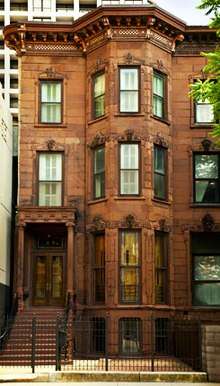
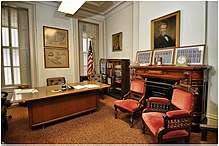
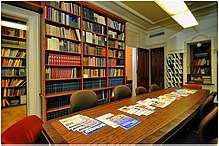
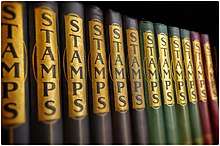
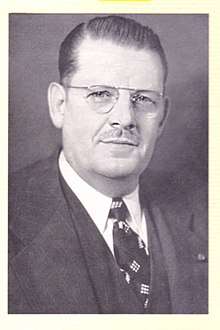
The CCC was incorporated in accordance with the General Not For Profit Corporation Act on 13 October 1928 in the State of Illinois, with nine members being named directors and with meetings being conducted in members' homes.
Meetings continued at members' homes until World War II, at which time the meetings lapsed. On Sunday, 26 November 1944, a reorganization meeting of the then-charter-named "Chicago Collectors Club" was held at the home of Maj. Max G. Johl. Today's CCC is the result of that reorganization effort.
In 1967, CCC member Richard McPherren Cabeen offered the Collectors Club of Chicago his four-level brownstone home, located in Chicago's downtown "Gold Coast" area at 1029 North Dearborn Street. The Cabeen offer was accepted, and the building has served as the CCC Clubhouse since that time.
Because of the foresight of the Chicago-area's philatelic fraternity during the formative years, the current CCC membership enjoys the privileges and benefits of a permanent clubhouse building, a comprehensive philatelic library:[1] and the opportunity to socialize monthly or more frequently with fellow collectors having similar interests.
Membership in the Collectors Club of Chicago is by invitation only and is ratified by current membership.[2]
Publications
In late 2017, the Collectors Club of Chicago and author Hugh Feldman were awarded top honors for "U.S. Contract Mail Routes by Railroad (1832-1875)" at the Auktionshaus Christoph Gaertner awards ceremony held at MonacoPhil. It was the 5th Annual C.G. International Philatelic Promotion Awards competition.[3]
In summer 2019 in Omaha, author Dr. Yamil Kouri, Jr., won the Literature Grand and Large Gold awards in the American Philatelic Society's StampShow Literature Competition for his book Under Three Flags - The Postal History of the Spanish-Cuban / American War (1895-1898). The book was published by the Collectors Club of Chicago.[4]
Since 1968, the Collectors Club of Chicago, has published 33 original research specialized philatelic handbooks, compendia, and anthologies[5]
- New York Foreign Mail Cancellations, 1870-1876, Arthur Van Vlissingen and Morrison Waud (1968)
- Chicago Postal History, Editor: Harvey M. Karlen (1971)
- Franks of the Western Express, M. C. Nathan (1973)
- The United States 1869 Issue: An Essay-Proof History, Fred P. Schueren (1974)
- The United States Mail and Post Office Assistant, Editor: Michael Laurence (1975)[6]
- Colorado Territorial and Pre-Territorial Postmarks, David L. Jarrett (1976)
- The Express Mail of 1836-1839, James W. Milgram, M.D. (1984)[7]
- The Flight of the "Ville d'Orleans", Ernst M. Cohn (1978)
- The Waterbury Cancellations, 1850-1890, Paul C. Rohloff (1979)[8]
- The Postal Markings of New Jersey Stampless Covers, William C. Coles, Jr. (1983)
- Vessel-Named Markings on United States Inland and Ocean Waterways, 1810-1890, James W. Milgram. M.D. (1984)
- The Minnesota Territory in Postmarks, Letters and History, Floyd E. Risvold (1985)
- British Pictorial Envelopes of the 19th Century, Ritchie Bodily, Chris Jarvis, and Charless Hahn (1986)
- Postage Due: The United States Large Numeral Postage Due Stamps, 1879-1894, George B. Arfken (1991)
- Chicago's Crabgrass Communities, Harvey M. Karlen (1992)[9]
- An Encyclopedia of Texas Post Offices: Texas Post Offices Under Five Flags, Walter G. Schmidt (1993)
- New Hebrides Islands: Military Postal History of the United State Forces, 1942-1946, Stanley C. Jersey (1994)
- The Stamps of the Mexican Revolution, 1913-1916, Nicholas Follansbee (1996)[10]
- United States Patriotic Covers of World War II, Lawrence Sherman, M.D, (1999)
- The United States Post Office Department in World War II, Lawrence Sherman, M.D. (2002)
- Chicago's Mail, Harvey M. Karlen (2002)
- Canada's Registered Mail, 1802-1909, From Money Letters through Insurance for a Fee, Horace W. Harrison, George B. Arfken, and Harry W. Lussey; Editor: K. Gray Scrimgeour (2002)
- The Hungarian Hyperinflation of 1945-1946: The Postage Rates Postal History of History's Most Impressive Inflation, Robert B. Morgan (2003)
- First United States Perforated Stamps - The 1857 Issue, Jon W. Rose (2005)[11]
- Intercepted in Bermuda: The Censorship of Trans-Atlantic Mail During the Second World War, Peter A. Flynn (2006)[12]
- U.S. Contract Mail Routes by Water: Star Routes, 1824-1875, Hugh V. Feldman (2008)
- United States Ten-Cent 1869 Covers: A Postal Historical Survey, Michael Laurence (2010)
- Detained, Interned, Incarcerated: U.S. Enemy Noncombatant Mail in World War II, Louis Fiset (2010)
- Postage Due - The United States Postage Due Essays, Proofs and Specimens, 1879-1986, by Harry K. Charles, Jr. (2014)
- The Prestamp Period of El Salvador (1525 - 1866), Guillermo F. Gallegos and Joseph D. Hahn (2015)
- Soviet Clandestine Mail Surveillance 1917-1991, David M. Skipton and Steve Volis (2016)
- U.S. Contract Mail Routes by Railroad (1832-1875), Hugh V. Feldman (2017)[13]
- Under Three Flags - The Postal History of the Spanish-Cuban / American War (1895-1898), Yamil H. Kouri Jr. (2019)
Awards
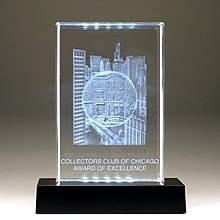
CCC Award of Excellence. This award is given at the discretion of the jury for an exhibit judged to be the most excellent with respect to content, presentation and completion. On an annual basis, it is available for the American Philatelic Society / American Topical Association / American First Day Cover Society Great American Stamp Show and internationally to select FIP (Fédération Internationale de Philatélie) and FIAF (Federación Interamericana de Filatelia) sponsored exhibitions. The made-in-the-USA award is a borosilucate glass crystal with high-definition, three-dimensional hand engraving.
.jpg)
CCC Gold Medallion Award. This award is given to a multi-frame Large Gold or very deserving Gold Medal exhibit for particular merit in: 1. Originality in concept; 2. Strong integration of research; 3. A new approach to exhibiting; 4. Exceptionally clear and informative exhibit write-up; 5. Visual appeal to the public. CCC allows for the Gold Medallion Award to be given to a single-frame exhibit in exceptional circumstances. Judges may designate the award to the Grand or Reserve Grand exhibit in a stamp show, but CCC asks that the award not be bestowed upon exhibits of lower merit.
CCC Robert Pratt Award. The CCC Pratt Award is named for Col. Robert H. Pratt, the pre-eminent Newfoundland stamp and postal history collector, researcher, and author. The award consists of a $US1,000 honorarium awarded annually in its entirety to one or more author(s) for articles or other publications related to the philately of Newfoundland as judged by the CCC Pratt Award Committee.[14]
Landmarked Clubhouse
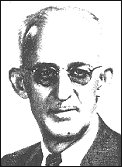
In a letter to the Club dated 29 August 1967, CCC member Richard McPherren Cabeen and his wife, Blema, formally offered the Collectors Club of Chicago their stately four-level brownstone home, located in Chicago's "Gold Coast" area.[15][16] On 13 September 1967, at a special meeting of the CCC Board of Directors, the Cabeen house gift was accepted.
The Cabeen House at 1029 N. Dearborn St. attained a Chicago Landmark Status on 10 July 2002 as part of the Washington Square Historic District[17][18] and achieved listing on the United States National Register of Historic Places on 21 August 2003.
The Cabeen House hosts monthly social and general meetings for its members, accompanied by formal dinners and invited guest speakers.
References
- "Daniel F. Kelleher Auctions, LLC". db.kelleherauctions.com. Retrieved 2017-03-26.
- "Collectors Club Of Chicago". collectorsclubchicago.org. Retrieved 2017-03-26.
- "2017 - CG International Philatelic Sponsorship Award".
- American Philatelic Society (PDF) https://stamps.org/Portals/0/2019%20Stampshow%20NTSS%20Palmares.pdf. Retrieved 21 June 2020. Missing or empty
|title=(help) - Hartmann, Leonard. "The Collectors Club of Chicago". Philatelic Bibliophole. Leonard Hartmann. Retrieved 26 March 2017.
- United States Mail and Post-office Assistant, 1860-1872. Collectors Club of Chicago. 1872-01-01.
- Milgram, James W. (1977-01-01). The Express Mail of 1836-1839: To Provide a Faster Mail Service Between the North and the South and the East and the West. Collectors Club of Chicago.
- Rohloff, Paul C.; Diamond, Alfred (1979-01-01). The Waterbury Cancellations, 1865-1890. Collectors Club of Chicago.
- Karlen, Harvey M. (1992-06-01). Chicago's crabgrass communities: a history of the independent suburbs and their post offices that became part of Chicago. Collectors' Club of Chicago. ISBN 9780916675042.
- Burian, Edward (2015-08-15). The Architecture and Cities of Northern Mexico from Independence to the Present. University of Texas Press. ISBN 9781477307236.
- Rose, Jonathan W. (2005-01-01). First United States Perforated Stamps: The 1857 Issue. Collectors Club of Chicago.
- Flynn, Peter A. (2006-01-01). Intercepted in Bermuda: The Censorship of Transatlantic Mail During the Second World War. Collectors Club of Chicago. ISBN 9780916675158.
- "Railroad & Street Car".
- https://www.collectorsclubchicago.org/pratt-newfoundland-philately-award/
- "American Philatelic Society". stamps.org. Retrieved 2017-03-26.
- "American Philatelic Society". stamps.org. Retrieved 2017-04-30.
- District, Chicago Park. "Washington Square Park | Chicago Park District". www.chicagoparkdistrict.com. Retrieved 2017-04-30.
- Chicago (Ill.); Department of Planning and Development; Commission on Chicago Landmarks (2001-01-01). Washington Square District Extension, 22-28 and 27-31 West Chestnut Street and 802-18, 811-67, 1012, 1023-29 and 1150-54 North Dearborn Street: preliminary landmark recommendation approved by the Commission on Chicago Landmarks, June 7, 2000. Chicago, IL: The Commission. OCLC 49419085.